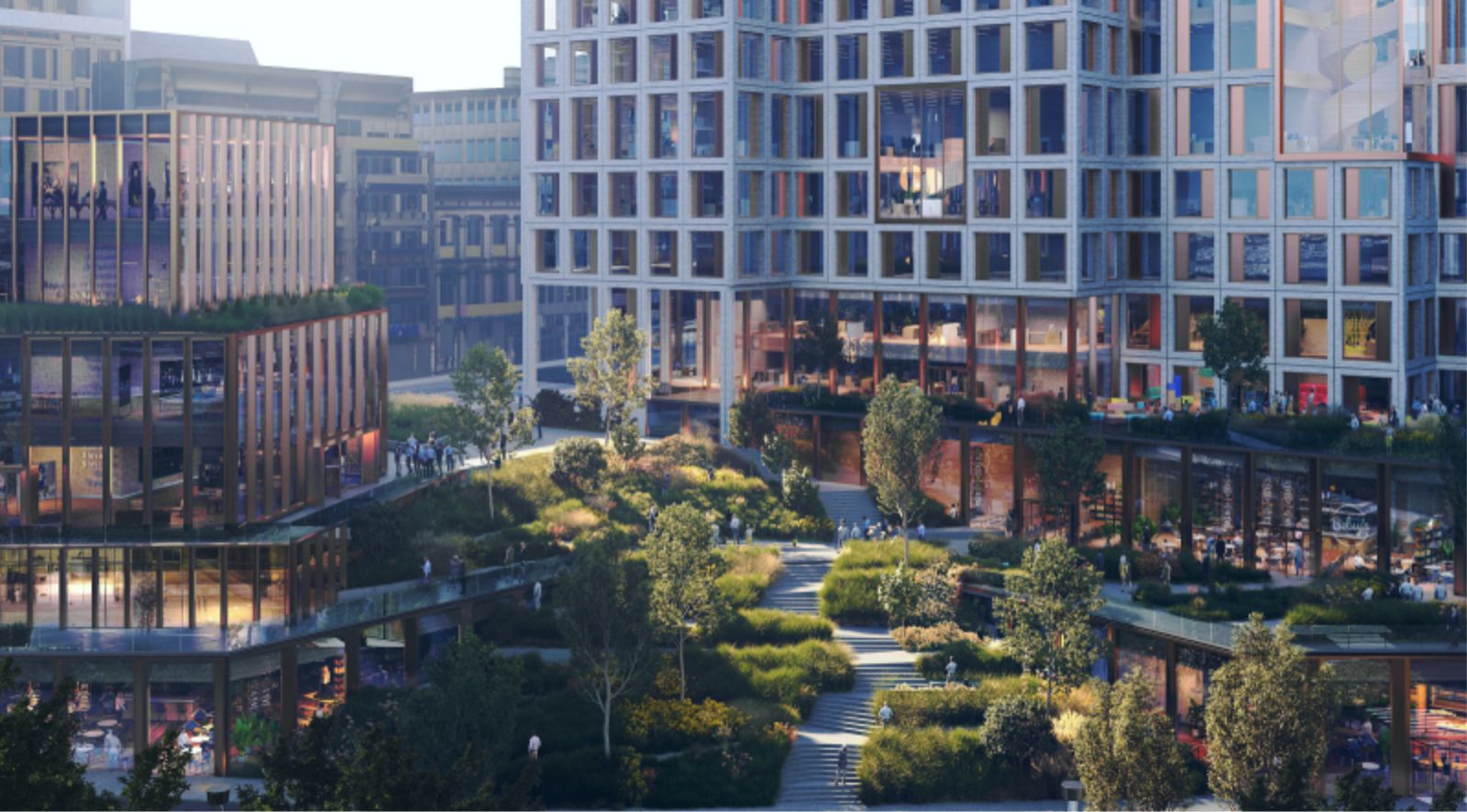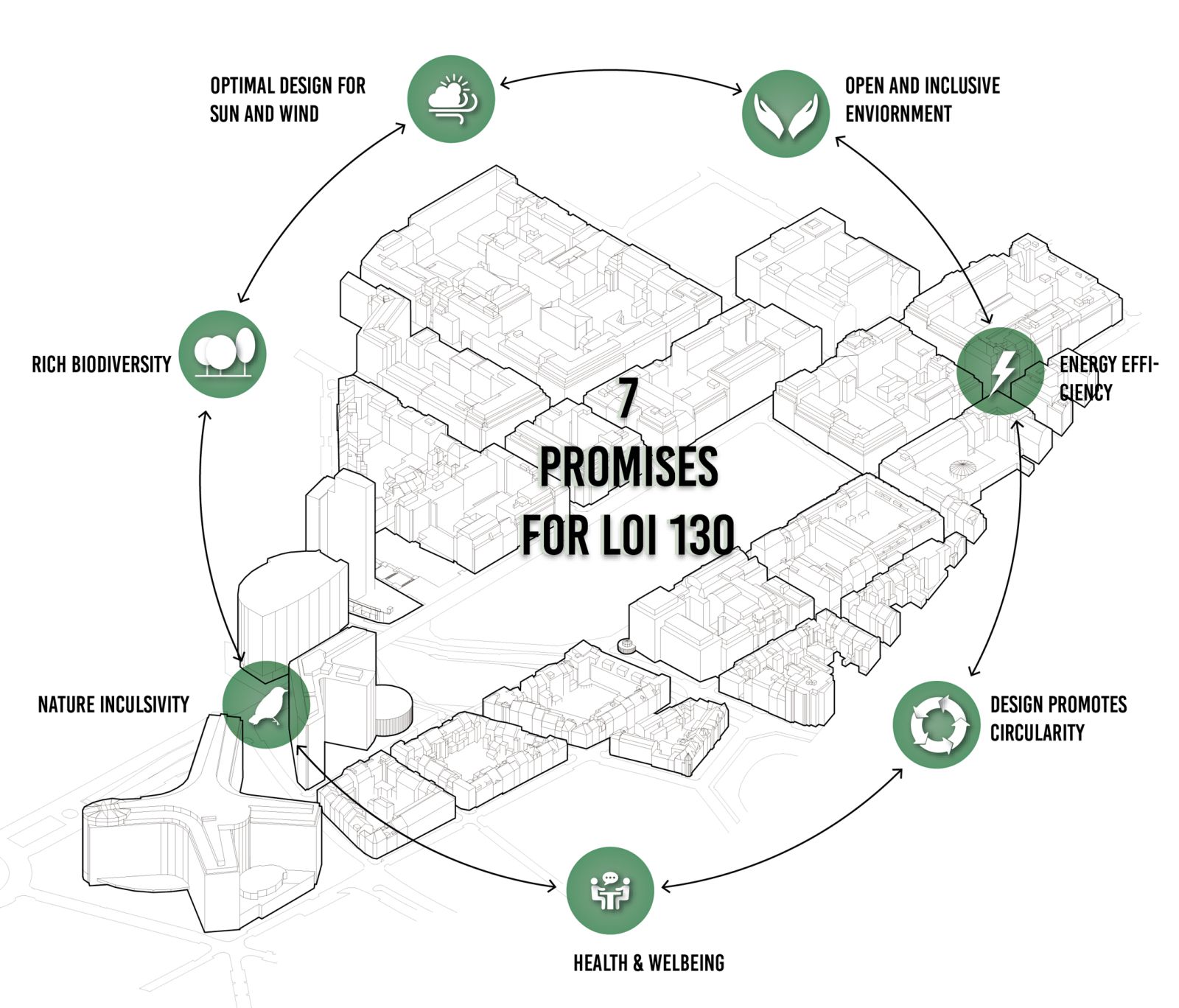DELVA’s design of the outdoor spaces champions the notion of our natural European landscapes as our common ground. These diverse landscapes unite across borders and reflect values of democracy, inclusivity, sustainability and equality. The design of the outdoor spaces for EUC are therefore directly based on this patchwork of European landscapes. Five main native tree and plant communities found within the landscapes of the European Union find their way to EUC: Atlantic, Boreal, Alpine, Central and Mediterranean.
Atlantic landscapes native to Belgium form the basis of the transformation of the lower areas: the Maelbeek valley and streetscapes. The topography of the Maelbeek valley is used to create an urban landscape that offers beautiful views of Brussels and creates a green pedestal for the new building complex. The public spaces offer plenty of seating spots in the sun, as well as allow for shaded enjoyment of the outdoors. The project team consisted of URO II & ARCHI+I (B2Ai) from Belgium (Team Leader), C.F. Møller Architects, DELVA Landscape Architects from the Netherlands and VK Engineering from Belgium.
An integrated approach
A green network stretches across the slopes, courtyards and roof gardens. Depending on their position and climatic conditions, plant communities and tree species from the different European landscapes will be used. Alpine species will find their way to the higher and windier roof gardens, whilst sunlight roof areas are more suited for the dryer Mediterranean plant groups.
The courtyards and shaded areas will be planted with Central and Boreal species. Consequently, all public and private outdoor spaces will have their own recognisable quality and signature. At the same time plants allow for natural transitions and beautiful blended patterns. The landscape of EUC will thus display an integrated approach to landscape design that highlights our common ground: the natural landscapes of Europe.
Promises of biodiversity
Hundreds of trees will be planted at site. Along with grassed areas, perennial planting and woodland planting, trees form the main ecological and sustainable ingredient of the landscape design. Long living native tree species make up the selection (e.g. Quercus, Pinus, Betula, Tilia, Fagus, Platanus, Carpinus, etc). The rich bio-diverse landscape plan adds natural life into the very heart of Brussels and brings seasonal beauty into the heart of the European Commission.
Green zones on all levels promotes innovative remediation strategies, purifying the city air, reducing the outdoor temperature, rainwater re-use/filtration, generating sustainable energy, enriching materiality, minimising wind fall, ecological variety, design excellence and most importantly creating a calming working environment that demonstrates best practice in environmental, urban and social sustainability.
Public and private, working and meeting
The carefully articulated interface between buildings and public spaces form safety barriers as well as breakout areas for relaxation, meetings, sharing knowledge, chance encounters and spaces for health and wellbeing. The two large enclosed courtyards are silent green spaces that enhance that quality of the working environment considerably.
Semi-covered breakout spaces for the nurseries on site are integrated in the landscape design. These spaces also include areas for growing vegetables and fruits thus integrating a didactic learning landscape. A combination of pavilions and moveable furniture within the courtyards enables flexible space for activities/meeting spaces that support a contemporary workplace.
Central Plaza
The central plaza connects the city to the main entrances of the new building, cycle parking and the Maelbeek Metro Station. It is a modern, semi-covered and attractive urban space. The urban space allows for thousands of people to enter and leave the site. A wider cycling path and pedestrian zones will diminish the amount of mobility conflicts on site and create a generous public plinth to the large-scale building.
Context
The EUC building is rooted firmly into the city of Brussels, as an extension to the existing park and a new exiting part of the historic Maelbeek valley. The EUC needs a dynamic public space, not only a green one, but one that is strategically designed and equipped to compliment and counterbalance the busy streets of Brussels. Source by DELVA Landscape.
- Location: Brussels, Belgium
- Architect: URO II & ARCHI I (B2Ai), C.F. Møller Architects, DELVA Landscape Architects, VK Engineering
- Building service engineering: VK Engineering
- Structural engineering: VK Engineering
- Client: European Union Commission
- Year: 2019
- Images: Proloog.tv, Courtesy of DELVA Landscape










